Views : 549
Author : Zoe
Update time : 2025-04-17 14:15:13
Exploring the Best Fabrics for Custom Pillowcase: Which Material Reigns Supreme?
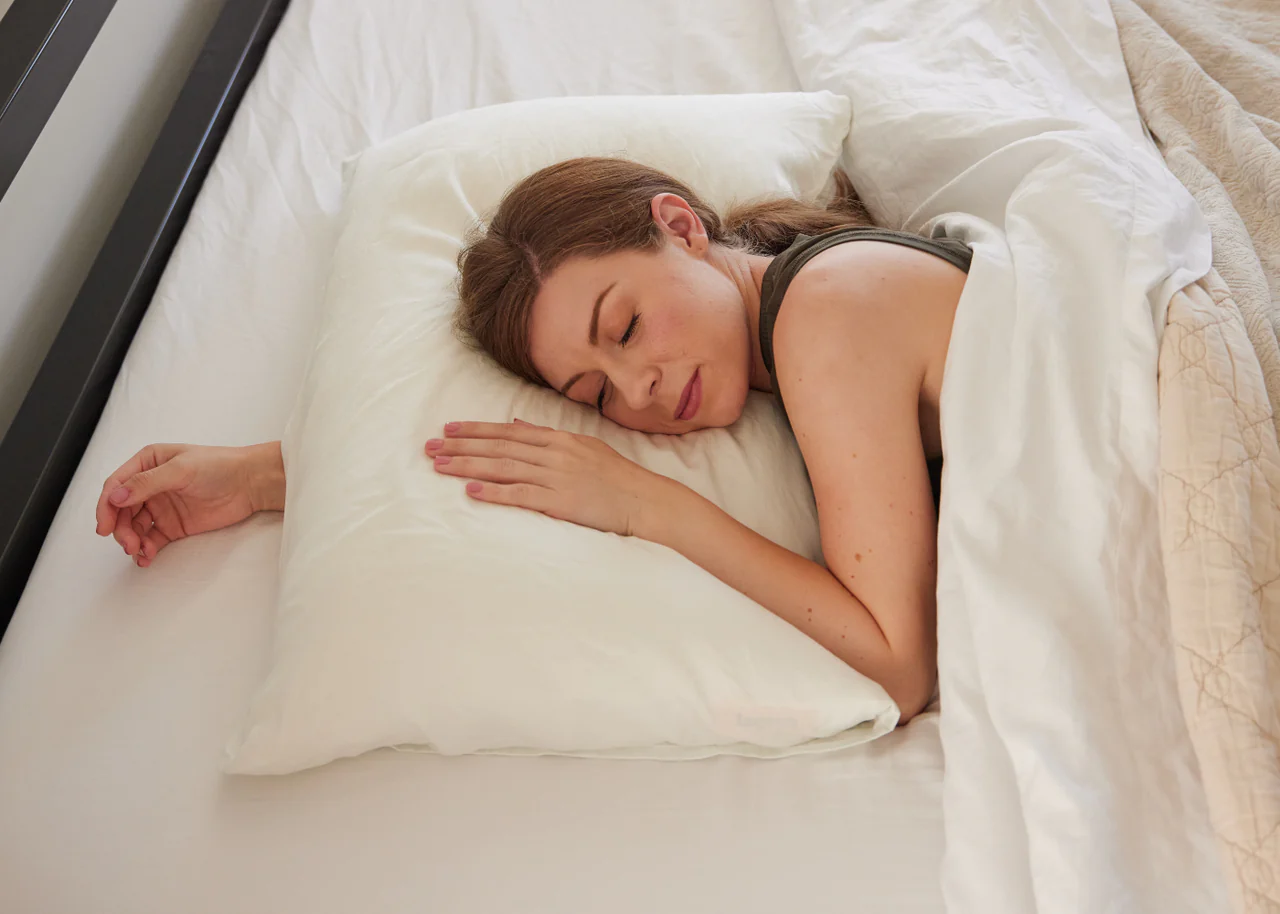
We spend approximately one-third of our lives sleeping. While sleep is essential for health, energy restoration, and skin repair, the materials we rest on play a critical role in enhancing these benefits. At Rivta Culture, we understand that the right fabric can elevate a simple pillowcase into a beauty and wellness essential. For brand CEOs, founders, Directors of Product Development, buyers, and trade companies seeking eco-friendly, high-quality products, selecting the best fabric for custom pillowcases is a strategic decision that aligns with consumer trends toward sustainability and self-care. In this guide, we explore the top fabrics for custom pillowcases, focusing on their benefits for sleep quality, with a special emphasis on sustainable options. Backed by research and industry analysis, we’ll help you make informed choices to create products that resonate with eco-conscious consumers and elevate your brand.
Why Pillowcase Fabric Matters
Pillowcases are more than just bedding—they’re in direct contact with skin and hair for roughly 7-8 hours nightly, or over 200 hours monthly. The wrong fabric can exacerbate skin issues, cause hair breakage, or disrupt sleep quality, while the right one can enhance beauty routines and promote wellness.
For brands, offering pillowcases made from thoughtfully selected, sustainable materials can differentiate your product in a competitive market.
Consumer demand for eco-friendly products is soaring. According to a 2023 NielsenIQ report, 78% of global consumers say sustainability is important when making purchasing decisions, with 55% willing to pay more for environmentally friendly products. By choosing fabrics like bamboo, Tencel, or organic cotton, your brand can tap into this growing market while delivering functional, luxurious products.
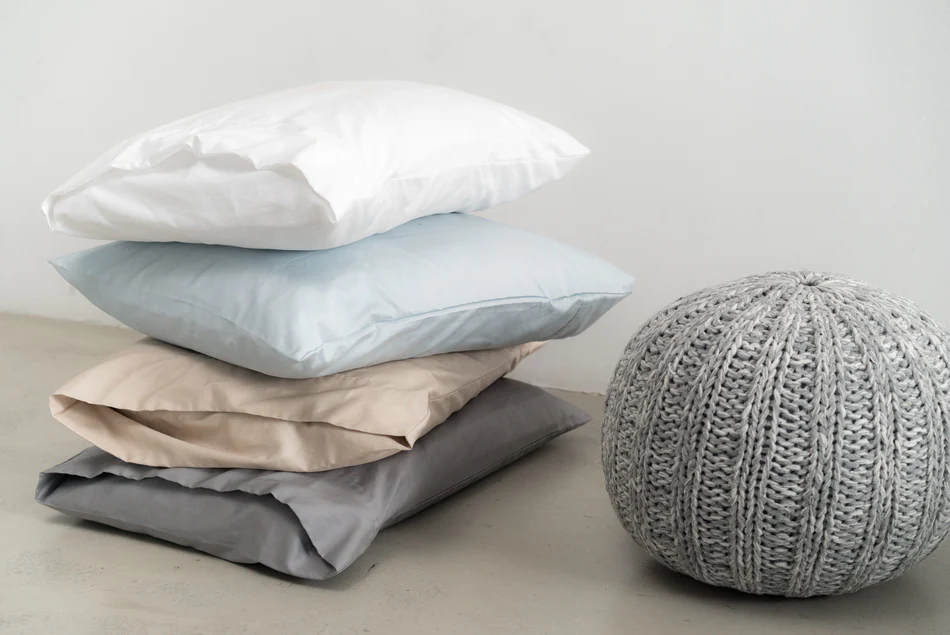
Which Fabric Reigns Supreme?
Cotton remains the most widely used pillowcase fabric due to its affordability and durability. Organic cotton, in particular, appeals to eco‑conscious consumers, as it avoids harmful pesticides and supports sustainable farming.
Percale cotton is crisp and breathable, ideal for hot sleepers, while sateen offers a silk‑like smoothness. However, cotton’s absorbency can trap oils, potentially causing skin issues, as noted by Business Insider.
For brands targeting budget‑conscious buyers or trade companies, organic‑cotton pillowcases are a cost‑effective way to enter the sustainable market.
Pairing organic cotton with eco‑friendly packaging can further enhance appeal, aligning with Rivta’s expertise in sustainable beauty accessories.
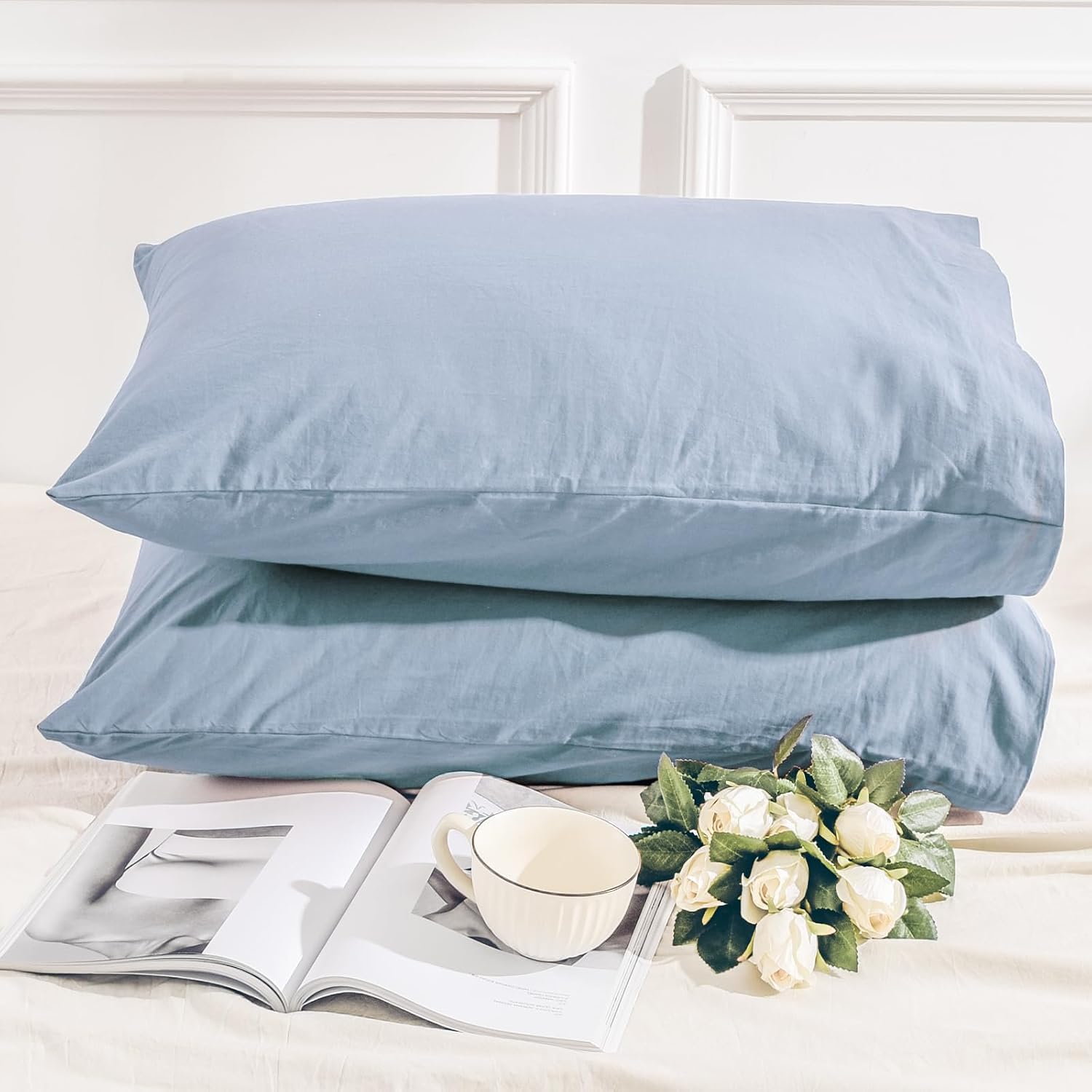
Comprehensive Analysis of Pillowcase Fabrics
Below, we dive into the most popular fabrics for custom pillowcases, evaluating their properties, benefits, and drawbacks. This analysis is tailored for brand leaders looking to develop products that balance consumer needs, sustainability, and market appeal.
Detailed Fabric Comparison
The following table summarizes key attributes of pillowcase fabrics, based on industry research and consumer preferences:
| Fabric Type | Details | Best For | Sustainability Score | Notes/Concerns |
| Silk | Natural protein fiber, smooth, antimicrobial, luxurious | Skin/hair health, luxury market | Moderate (ethical concerns) | High maintenance, expensive, ethical issues (2,000+ silkworms per pound) |
| Bamboo | Eco-friendly, soft, breathable, moisture-wicking | Eco-conscious, breathability | High | May require chemical processing, verify certifications |
| Tencel (Lyocell) | Wood pulp-based, sustainable, soft, hypoallergenic | Eco-conscious, sensitive skin | High | Slightly higher cost than cotton, but eco-friendly |
| Organic Cotton | Natural, breathable, available in percale or sateen weaves | Affordability, hot sleepers (percale) | High | Absorbs oils, may cause breakouts; choose organic for sustainability |
| Linen | Natural, breathable, durable, softens over time | Hot sleepers, rustic aesthetic | High | Initially rough, wrinkles easily, may shed |
| Satin (Polyester) | Synthetic, smooth, affordable | Budget-friendly, smooth feel | Low | Lacks breathability, causes static, not eco-friendly |
Silk: The Gold Standard for Luxury
Silk, derived from silkworm cocoons, is celebrated for its smooth texture and antimicrobial properties. It reduces friction, helping prevent sleep lines, acne, and hair breakage—key selling points for beauty-focused brands. According to Nollapelli, silk’s low absorbency preserves skin’s natural oils, unlike cotton, which can exacerbate breakouts. Mulberry silk, as noted by Peacock Alley, is particularly luxurious, offering a cool, cozy feel.
However, silk’s high cost and maintenance needs (hand washing, air drying) may limit its appeal for mass-market brands. Ethical concerns also arise, as Discover Magazine reports that over 2,000 silkworms are killed per pound of silk. For brands targeting premium markets in the U.S. and Europe, silk pillowcases can command premium prices, with consumer willingness to pay up to 30% more for beauty-enhancing products, per a 2024 Statista survey.
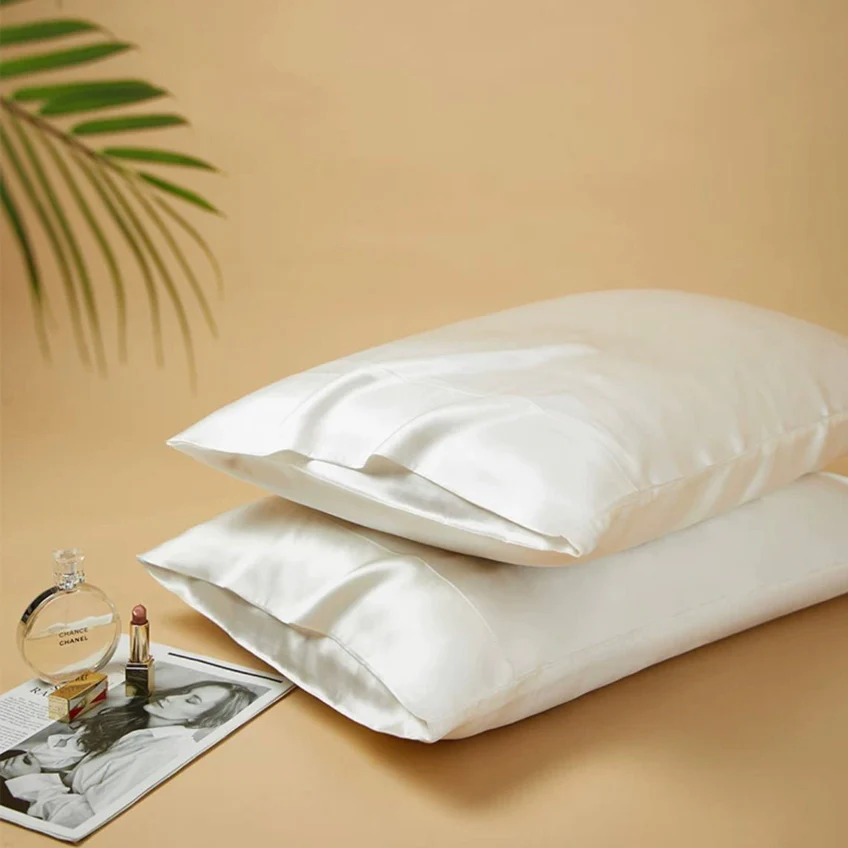
Bamboo and Tencel: Sustainable Superstars
For brands prioritizing sustainability, bamboo and Tencel (Lyocell) are standout choices. Bamboo is naturally breathable, moisture-wicking, and soft, making it ideal for sensitive skin and hot sleepers.
Tencel, made from sustainably sourced wood pulp, is hypoallergenic and biodegradable, with a closed-loop production process that minimizes environmental impact. Both fabrics align with Rivta’s commitment to natural, sustainable fibers, as highlighted on our website.
A 2024 McKinsey report notes that 66% of U.S. consumers prioritize eco-friendly materials in home goods, making bamboo and Tencel pillowcases a smart choice for brands targeting eco-conscious buyers.
While bamboo processing can involve chemicals, choosing certified suppliers ensures sustainability. These fabrics offer a compelling balance of affordability, softness, and green credentials, perfect for mid-to-high-end markets.

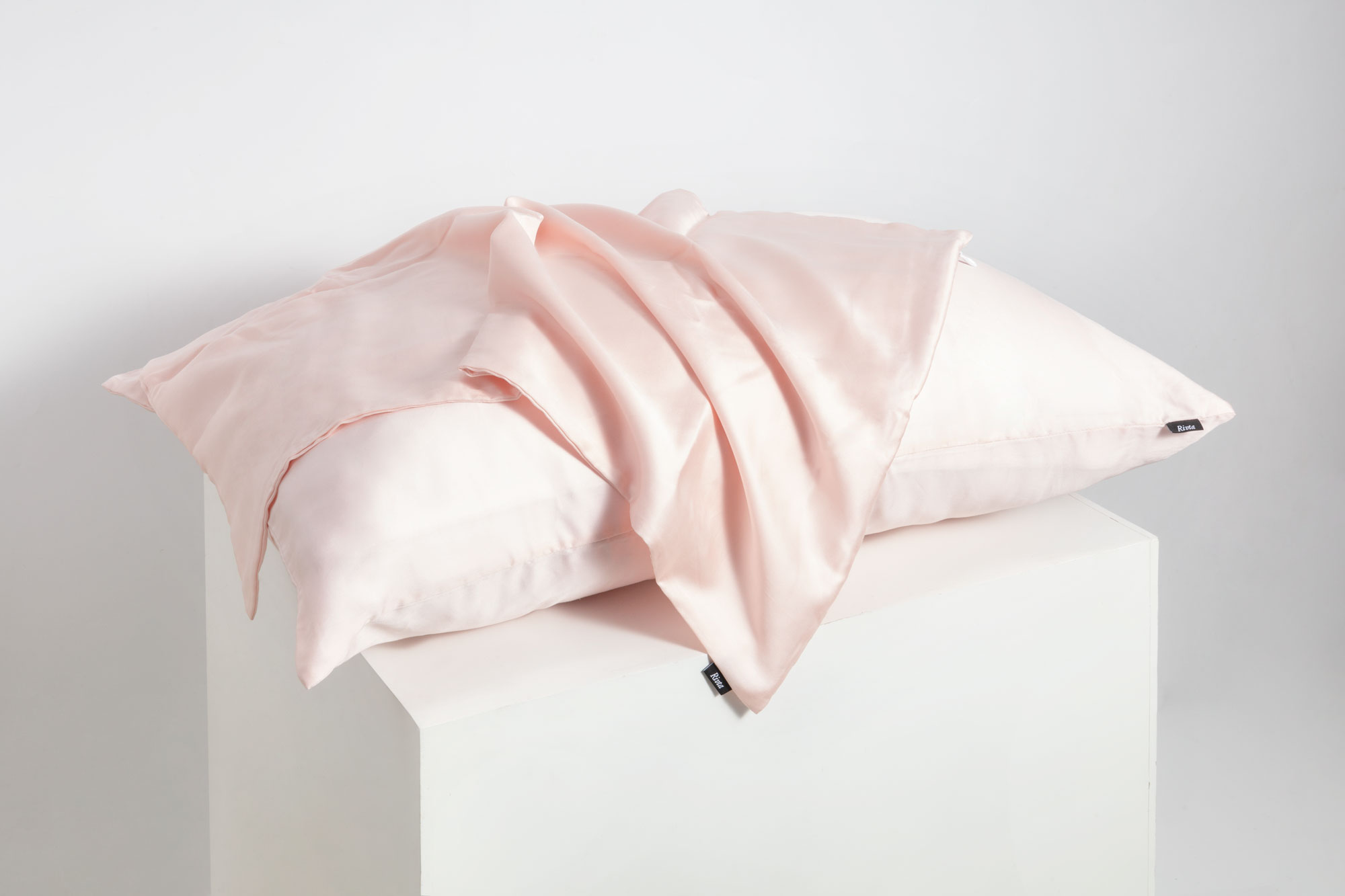
Organic Cotton: The Versatile Classic
Cotton remains the most widely used pillowcase fabric due to its affordability and durability. Organic cotton, in particular, appeals to eco-conscious consumers, as it avoids harmful pesticides and supports sustainable farming.
Percale cotton is crisp and breathable, ideal for hot sleepers, while sateen offers a silk-like smoothness. However, cotton’s absorbency can trap oils, potentially causing skin issues, as noted by Business Insider.
For brands targeting budget-conscious buyers or trade companies, organic cotton pillowcases are a cost-effective way to enter the sustainable market. Pairing organic cotton with eco-friendly packaging can further enhance appeal, aligning with Rivta’s expertise in sustainable beauty accessories.

Linen: Breathability Meets Durability
Linen, made from flax, is a natural, breathable fabric that excels in warm climates. It softens with each wash, offering a rustic yet luxurious feel. Peacock Alley highlights its moisture‑wicking properties, making it ideal for hot sleepers. However, linen’s initial roughness and tendency to wrinkle may require careful marketing to position it as a premium, low‑maintenance option.
Linen’s sustainability credentials are strong, as flax requires minimal water and pesticides. For European markets, where linen bedding is a cultural staple, this fabric can attract buyers seeking durable, eco‑friendly products.
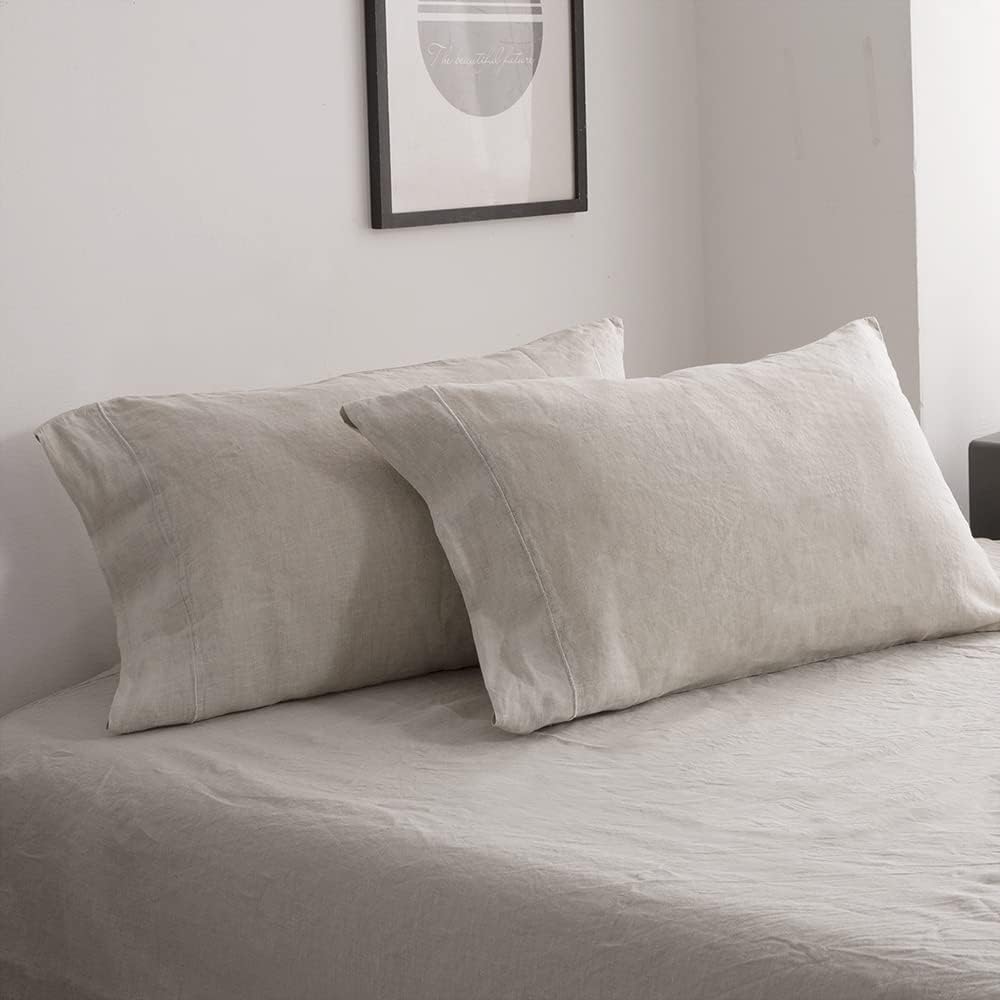
Satin (Polyester): A Budget‑Friendly Alternative
Synthetic satin, often polyester‑based, mimics silk’s smoothness at a lower cost. While affordable, it lacks breathability and can cause static, making it less ideal for skin and hair health.
For brands focused on sustainability, synthetic satin is a less attractive option due to its environmental impact.
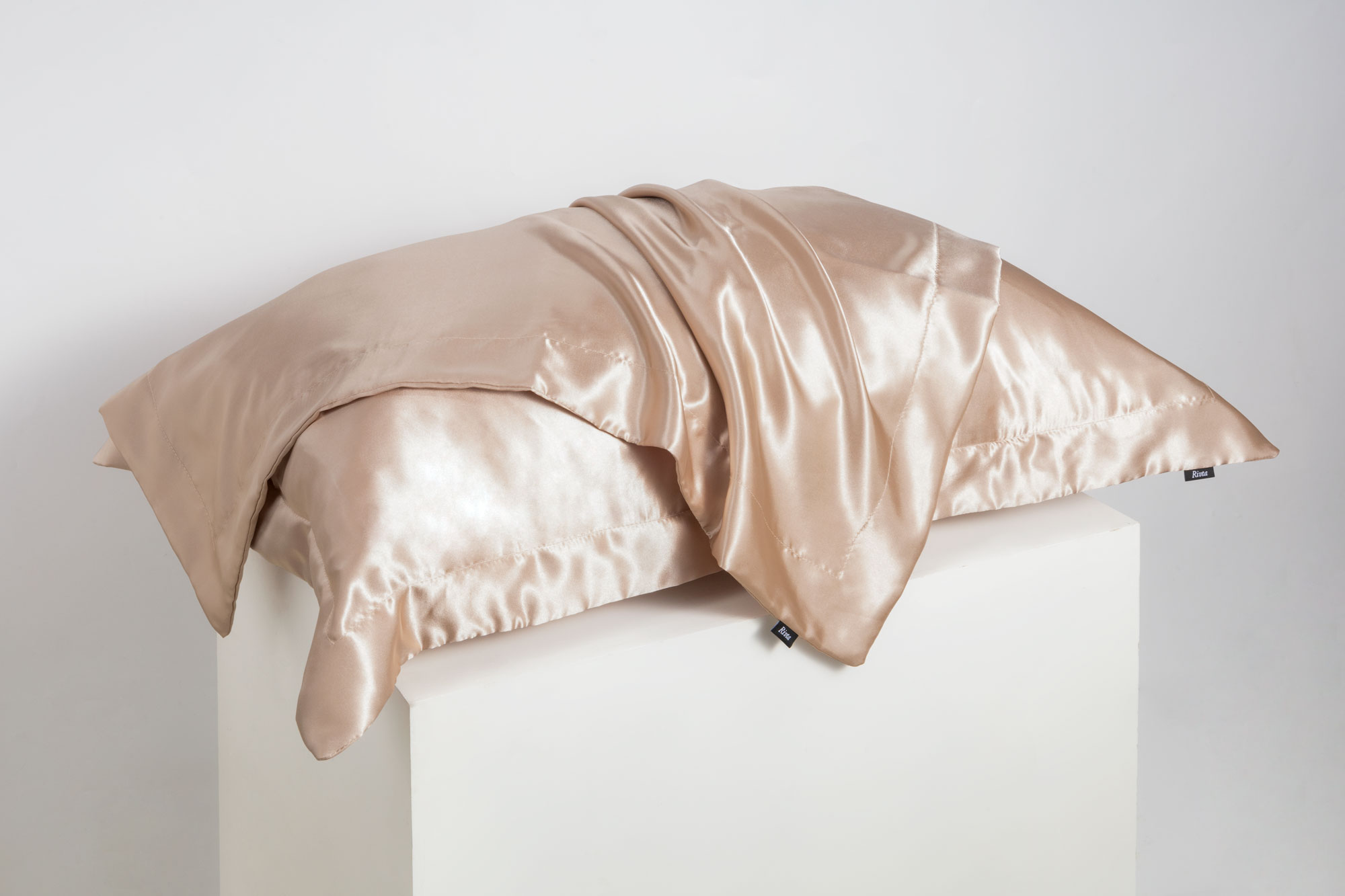
Consumer Preferences: Data‑Driven Insights
To guide your product development, consider these consumer preferences based on recent market research:
| Preference | Percentage of Consumers | Source |
|---|---|---|
| Prioritize eco‑friendly materials | 66% | McKinsey (2024) |
| Willing to pay more for sustainability | 55% | NielsenIQ (2023) |
| Value skin/hair benefits | 45% | Statista (2024) |
| Prefer breathable fabrics | 38% | Business Insider (2024) |
These trends underscore the demand for pillowcases that combine sustainability, beauty benefits, and comfort—qualities Rivta can deliver through custom designs and sustainable materials.
Why Choose Rivta for Custom Pillowcases?
At Rivta Culture, we specialize in crafting eco‑friendly beauty accessories and bags, from design to manufacturing. Our expertise in sustainable fibers like bamboo, Tencel, organic cotton, and linen ensures your pillowcases meet the highest environmental and quality standards. We offer:
* Custom Design: Tailored pillowcases that reflect your brand’s aesthetic and values.
* Sustainable Materials: Certified eco‑friendly fabrics to appeal to conscious consumers.
* Scalable Manufacturing: Flexible production for small batches or large orders, serving U.S. and European markets.
* End‑to‑End Service: From concept to delivery, we streamline the process for CEOs, founders, and buyers.
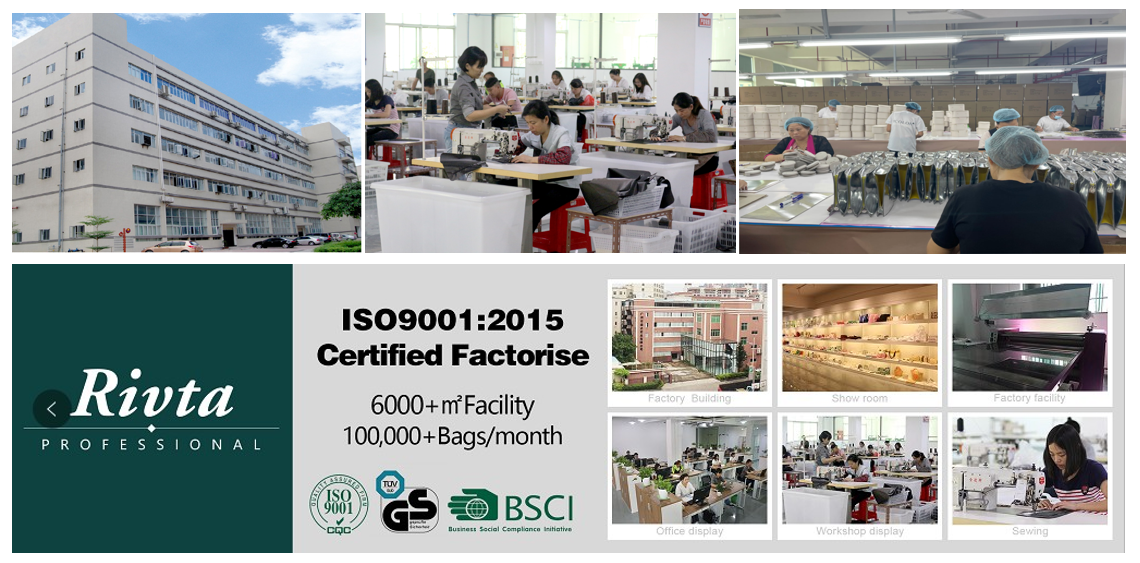
Conclusion: Crafting a Winning Product
Choosing the best fabric for custom pillowcases is a strategic decision that can elevate your brand in the competitive beauty and home goods market.
At Rivta Culture, we’re committed to helping you create pillowcases that blend sustainability, functionality, and style. Our expertise in eco-friendly materials and custom manufacturing ensures your success.
Ready to bring your vision to life?
Contact us at Rivta Culture to explore sustainable pillowcase solutions that captivate your audience and drive growth.
Consumer demand for eco-friendly products is soaring. According to a 2023 NielsenIQ report, 78% of global consumers say sustainability is important when making purchasing decisions, with 55% willing to pay more for environmentally friendly products. By choosing fabrics like bamboo, Tencel, or organic cotton, your brand can tap into this growing market while delivering functional, luxurious products.
Related News
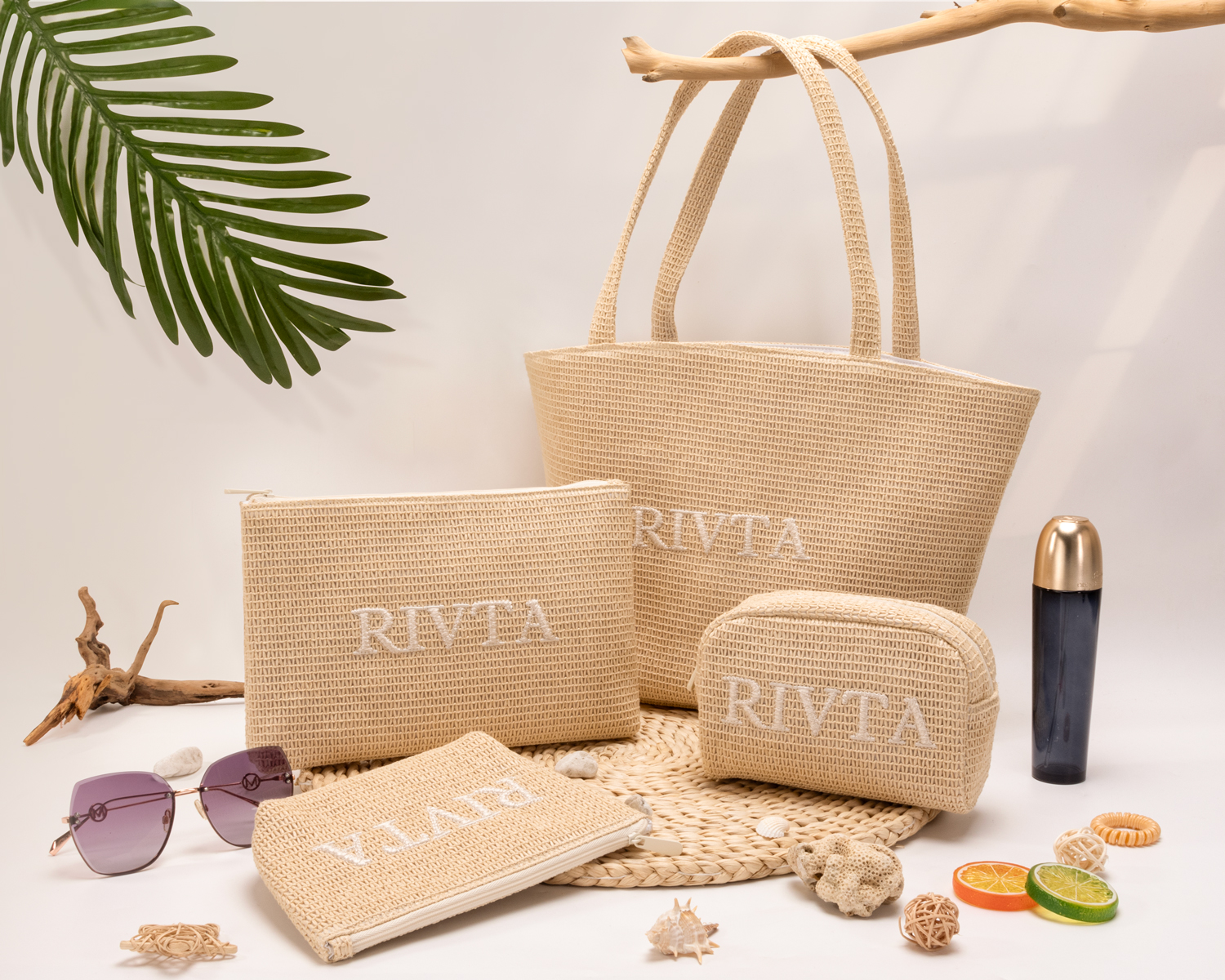
The Ultimate Guide to Sourcing Toilery Bags in Bulk from China (2026)?
Aug .19.2025
Struggling with low profit margins on your products? Sourcing directly from China can slash your costs, but finding a reliable supplier feels overwhelming and risky. You need a partner you can trust to deliver quality products on time.
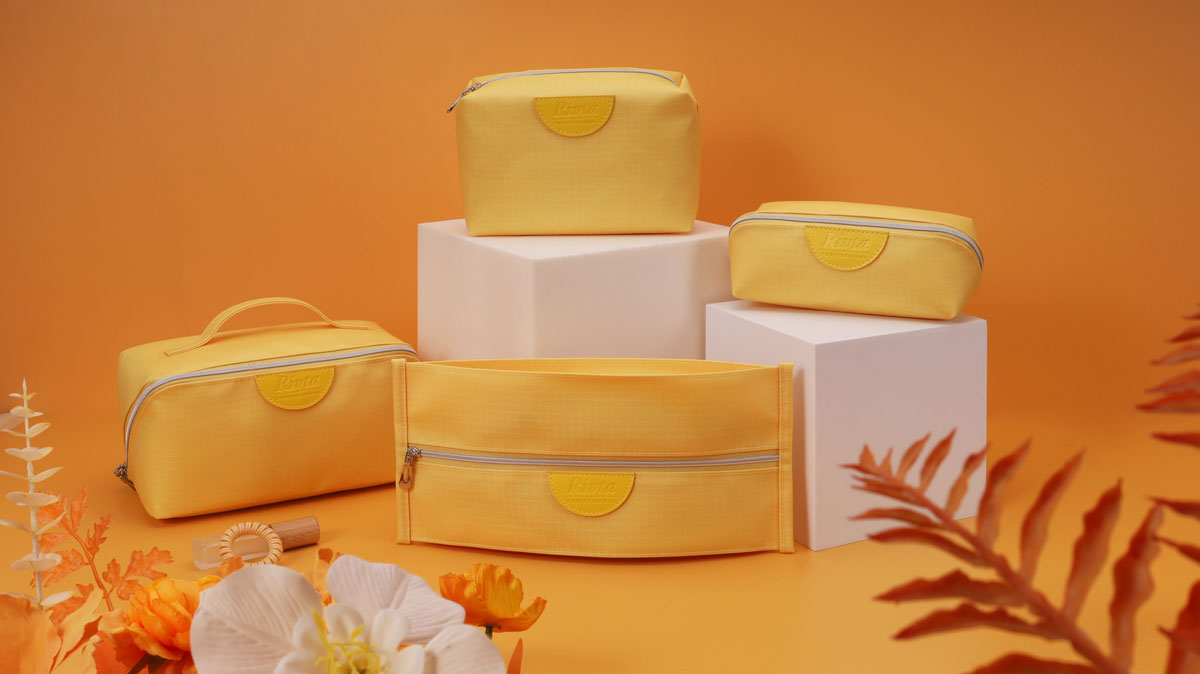
The Ultimate Guide to Designing a Custom MakeupBag with Your Logo
Aug .19.2025
Designing a custom makeup bag feels overwhelming. You face endless choices in materials, printing, and partners. A wrong step can cost time, money, and damage your brand's reputation.
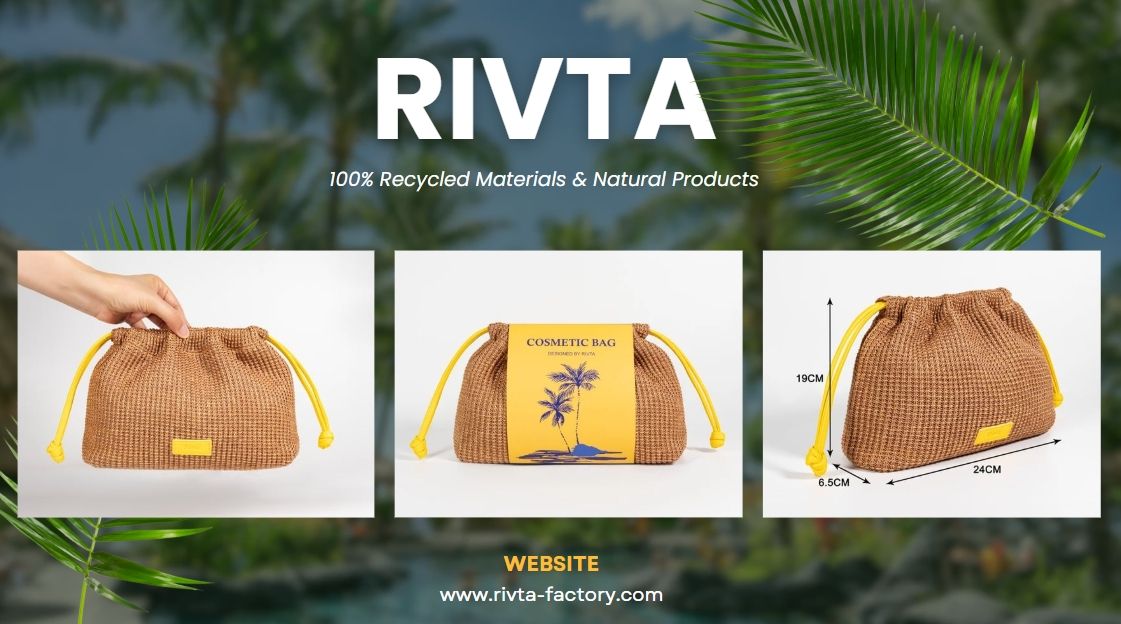
Are You Looking for Recommendations on Private Label Skin Care Manufacturers?
Aug .19.2025
Starting a skin care line is exciting, but finding the right manufacturer feels impossible. You need a partner you can trust. Let's make this process clear and simple.
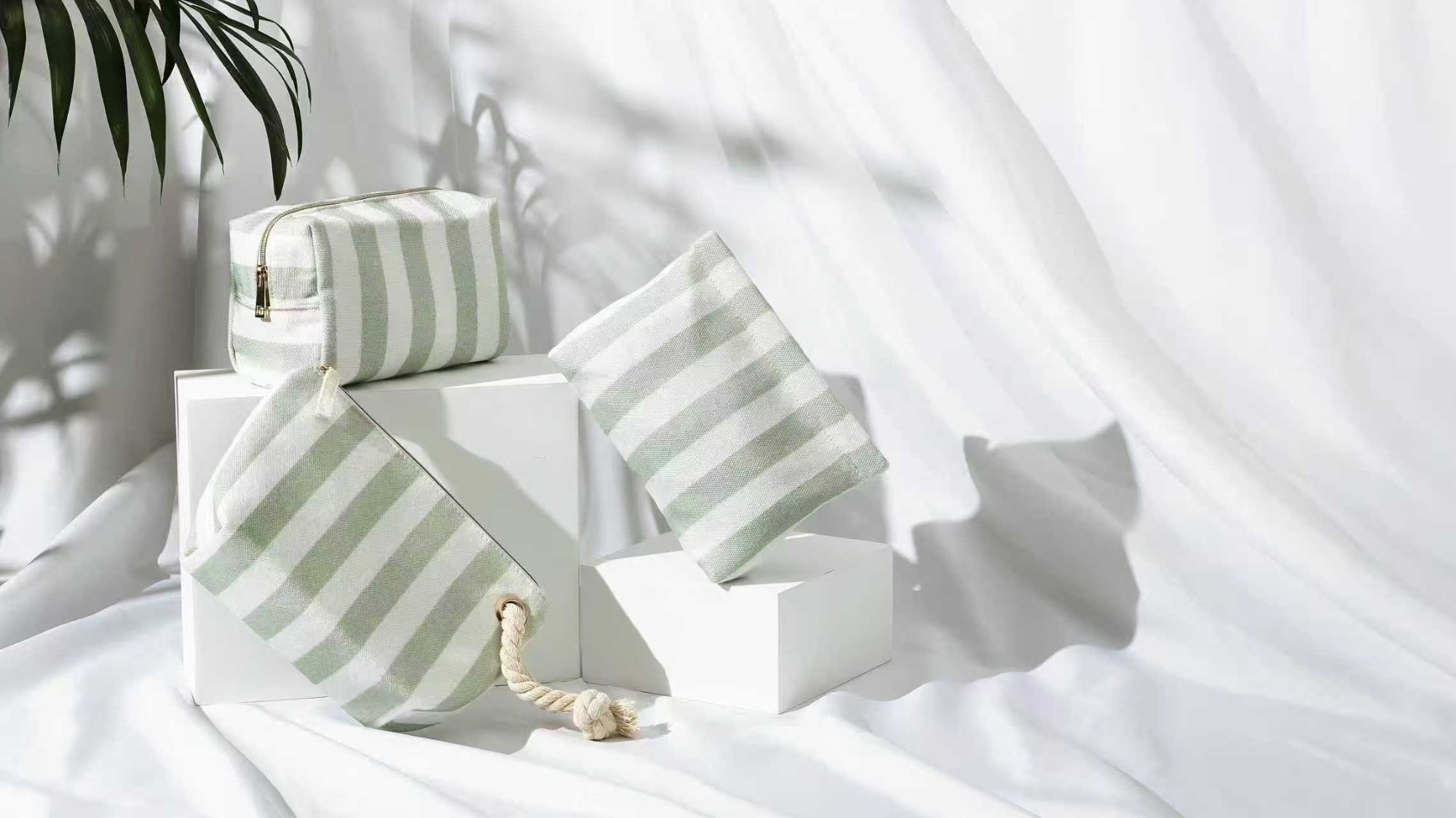
The Real Cost of Wholesale Toiletry Bags: A Supplier's Pricing Breakdown?
Aug .15.2025
Getting a quote for toiletry bags can feel like a black box. You worry you're overpaying or missing hidden costs that will surprise you later.

















